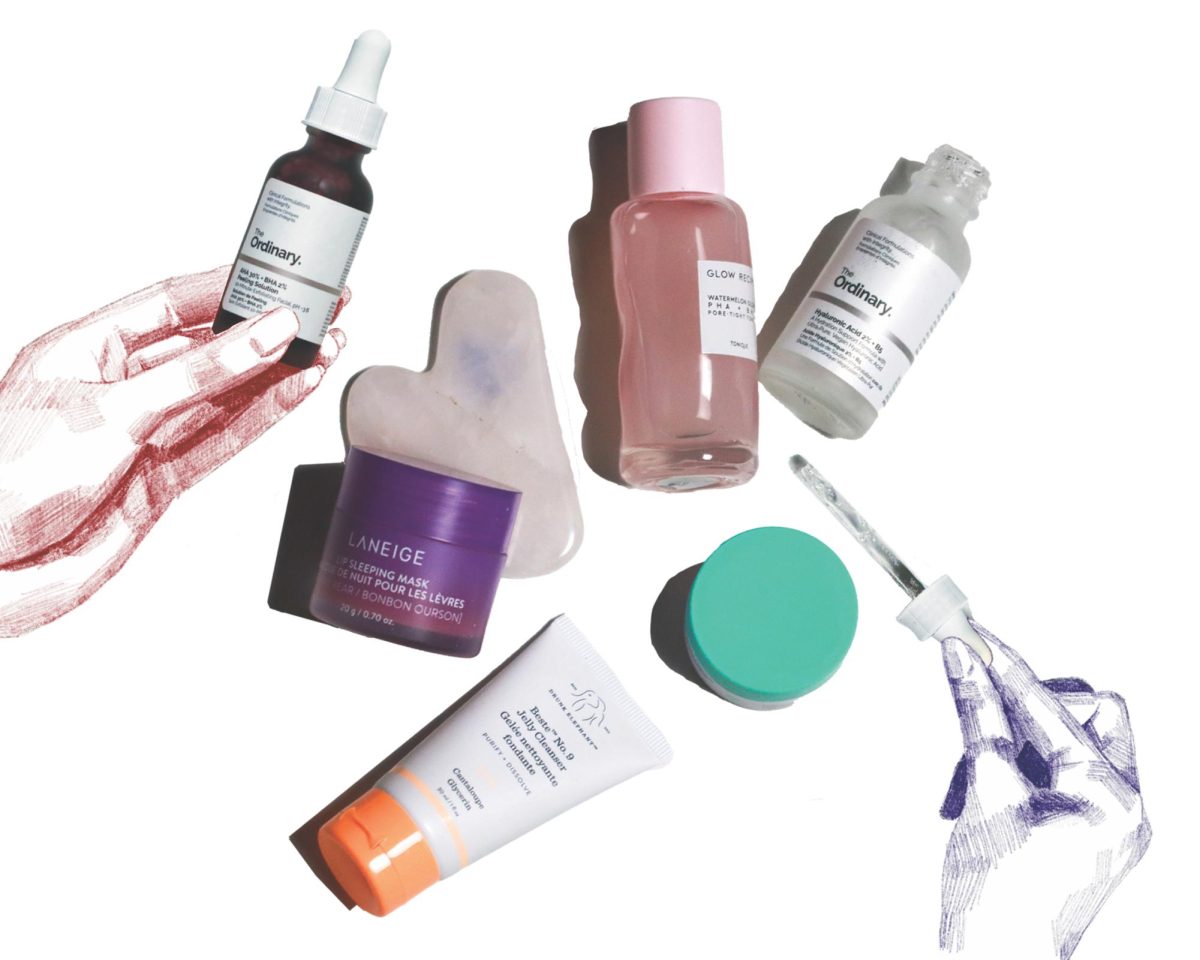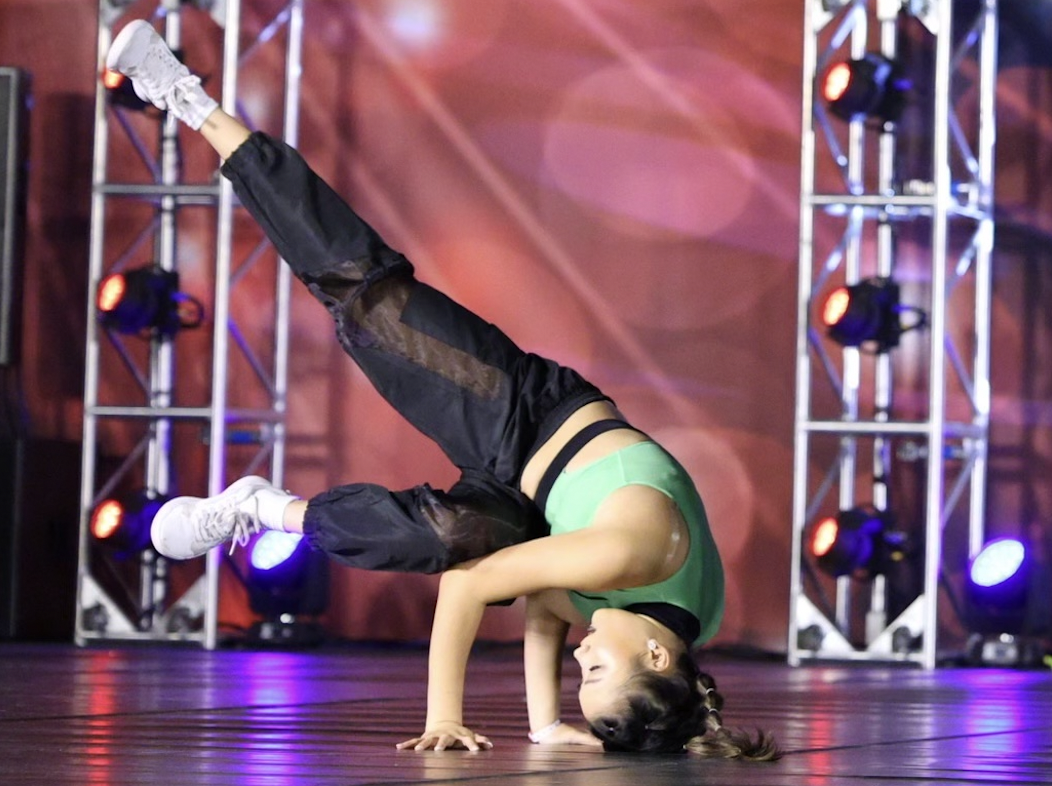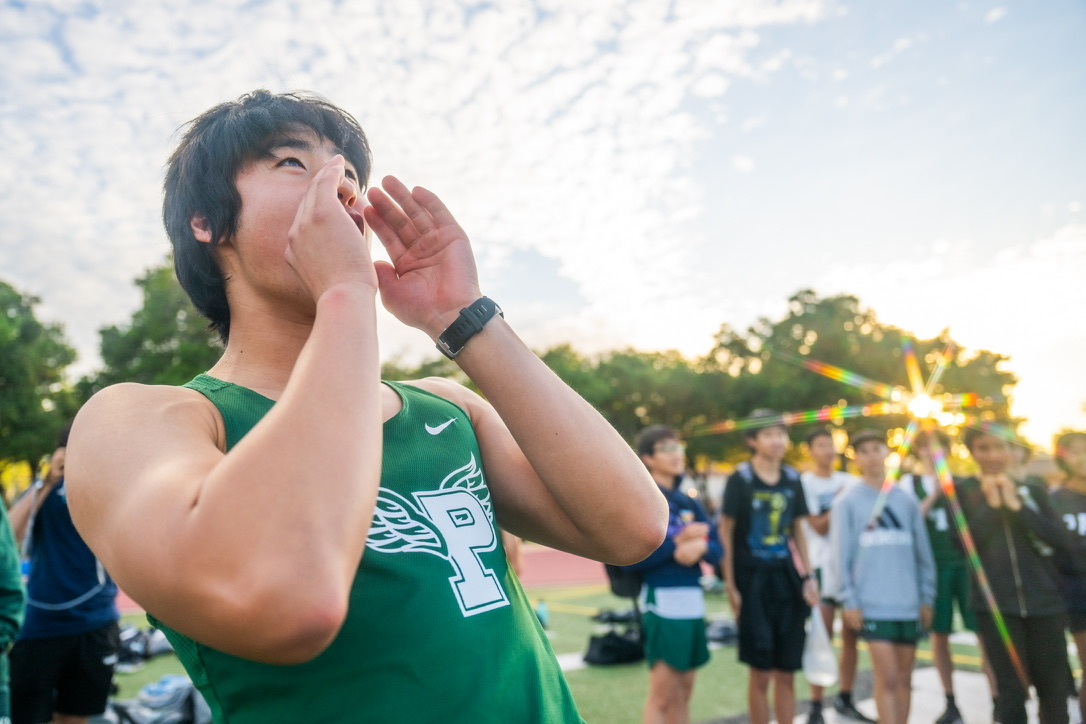Athletes are often crammed into constraining boxes of expectations and restrictions when it comes to their physical appearances and abilities. They’re supposed to represent the best of society: the fastest, the strongest, the most flexible. They’re expected to complete triathlons, land triple axels and look good while doing it.
Sports are widely valued for providing a means of staying fit, but unrealistic body expectations can lead to self-image issues as well as unhealthy regimens and coping mechanisms among athletes.
“With most sports, you can picture what the players look like: football players tend to be very big and strong, dancers are pictured as thin and slender, swimmers are lean and muscular,” said junior Riya Matta. “Almost every sport has a specific body type you associate with it.”
An ESPN survey that asked 201 Division I women about body image found nearly 70 percent of the athletes surveyed felt pressure to look pretty. This pressure is especially prevalent in sports like dance, ice skating and cheer, where athletes are judged on their appearance and presentation, in addition to their athleticism.
According to junior Alicia Kao, a former dancer at Dance Connection Palo Alto, the nature of the sport often creates an image-centric atmosphere. She said in dance, the focus is entirely on a person’s body and movements, which is why dancers are often more conscious of their appearance.
“You’re stuck in a room full of mirrors for hours and hours in a tight leotard. Your friends and your teachers can see your entire body, so naturally, you want to look good for class.”
Alicia Kao
The notion that thinness is the “ideal” physique is also often promoted by more traditional dance teachers according to Kao. Classically-trained ballet instructors tend to gravitate toward tall, slender figures for lead roles, often overlooking those with better technique for those whose figure may allow them to look better on stage.
“Ballet is supposed to be elegant and fluid, and there’s an underlying understanding that if your limbs are slimmer or thin, you naturally look better when you dance,” Kao said.
Dance isn’t the only sport where talented athletes are overlooked because of their figure. In fact, most sports assign their positions based on the typical body seen as ideal for that role, according to rower Matta, junior water polo player Ben Rappaport and junior cheerleader Eva Edzema.
In volleyball for instance, setters, the player responsible for setting up plays, are typically the tallest players.
Edzema, a former member of the Jordan Middle School volleyball team for three years, said while she never felt pressure to be taller, she wasn’t able to try certain positions because she wasn’t tall enough.
“[In volleyball,] positions are sort of determined by [your build],” Edzema said. “I really wanted to be a setter, but I wasn’t tall enough, and the coaches automatically assume that the best setter is going to be the tallest girl, so they don’t even let anyone else try.”
While volleyball players can’t change their height, dancers and other athletes may feel pressure to change aspects of their bodythey have some degree of control over, such as their weight, to fit these expectations.
Though Kao said her dance teachers have never told or intentionally pressured anyone into losing weight, they have occasionally praised some of her peers for losing weight or becoming slimmer.
“It’s the little comments that get to you,” Kao said. “My friend’s [dance] teacher once went up to her and said, ‘Wow! You look like you lost five pounds, congratulations.’ Even though it wasn’t like she was saying, ‘You need to lose weight,’ it still creates an atmosphere that encourages weight loss.”
Overall, the small comments made by coaches, as well as the notion that being slimmer will aid in getting roles, create an atmosphere that looks favorably upon weight loss.
According to Paly Athletic Trainer Justine Longi, athletes who participate in sports that encourage thinness are at a greater risk for eating disorders or other unhealthy practices.
“We’re taught to look out for [unhealthy practices in] gymnasts and divers. Essentially any sport where if you were leaner or lighter it would be more beneficial to your sport, those are the ones where we typically see issues with body image or issues maintaining the ideal body for that sport.”
Justine Longi
Struggling with an eating disorder while participating in a rigorous sport is not only detrimental to one’s athletic ability, but can also cause a myriad of severe health issues, according to Longi.
“One of the girls at my studio actually had an eating disorder while dancing, and no one knew,” Kao said. “She wasn’t doing so great in class, but people just thought she wasn’t trying and that she didn’t deserve to be here. She told me this after I left [the studio], but absolutely no one knew that this was a problem she was going through at the time. I don’t even think the teacher knew.”
In addition, failure to get an adequate amount of calories or water can result in fainting, rhabdomyolysis and even organ failure.
“If you [are severely dehydrated] while playing an intensive sport, you could die,” Longi said. “Another risk is that you are starving your body of major nutrients and of all the energy that you need, so your body starts eating at other places. Habdomyolysis [is] where your body starts eating your muscle tissue because there’s no fat or food [available]. People faint because they don’t have enough energy to sustain them through their sport.”
Eating disorders and other unhealthy regimens are typically more prevalent in sports with weight restrictions or classes such as crew and wrestling, according to an ESPN survey.
Crew, often referred to as rowing, is a rigorous sport where teams race boats at competitions called regattas. It is divided up into two weight classes — lightweight and open weight, also referred to as heavyweight.
The requirements for a female lightweight boat state that each rower must be below 130 pounds, and that the average weight in the boat must be below 125 pounds. Lightweight males rules require that each rower is below 150 pounds.
According to the ESPN survey on Division I female athletes, 32 percent of rowers have had an eating disorder, as opposed to 15 percent of overall athletes. In addition, 54 percent of rowers recorded that they knew a teammate with an eating disorder.
Cutting weight is also prevalent in wrestling, where athletes compete with other athletes in their weight category.
“If you’re normally 150 pounds and you wrestle [in the 150 pound class], that’s going to be difficult because usually somebody that’s bigger and usually at a higher weight cuts to be in the lower class,” Longi said. “Somebody that’s 150 pounds could cut down to [the] 130 pound or 120 pound class, which is a ton of weight. The nature of the sport is that they try to make weight and then right after they stuff their face.”
Different sports place an emphasis on different body types. While many sports like dancing and wrestling encourage a lean figure, others, such as football, promote a bigger more muscular build.
“For football, everyone assumes you need to be big, but there are different types of big,” Longi said. “If you’re a lineman, you’ll be more heavy set, muscular either way, but just more all-around big as opposed to a receiver or running back who tend to be leaner. Wide receivers are typically tall, lanky but lean.”
Athletes who play football are more prone to utilizing steroids or exercise supplements as opposed to developing eating disorders because the ideal body for football tends to be larger, according to Longi.
“For high school, it’s not as bad as it is in college, [where] the pressures to be bigger, faster, stronger and everything like that,” Longi said. “Over here, the kids try to look up protein powders, and creatine, more work out supplements as supposed to steroids to gain muscle mass. I’ve worked in high school for five, six years and I’ve never had any experiences where I had to deal with a high schooler taking steroids.”
According to Longi, steroid use can result in severe acne, rapid weight gain, testicle shrinkage and intense emotion or aggression, commonly referred to as roid rage.
Body image is incredibly subjective and personal, and varies dramatically based on the sport and individual, Longi said.
Many people don’t feel pressure to conform to the norms of their sport, or experience a more individualized set of issues regarding body image or unhealthy regimens.
“As a soccer player, I don’t feel pressure to fit into a particular image because there are a lot of different body types and I feel like it’s pretty diverse,” said sophomore Frida Rivera. “There are really slender players, and there are really muscular players, and they’re all good.”
In addition, there are lots of efforts to help dispel self-image issues and unhealthy practices.
Sports trainers and doctors are taught how to identify potential red flags that point to eating disorders, steroid use or other potentially dangerous regimens.
“We keep a vigilant eye on our athletes,” Longi said. “There are signs that you can see [such as] if people are losing too much weight too fast. But in high school, it’s kind of hard because everyone’s going through puberty, everyone’s bodies are changing. Some people lose weight really fast, some people gain weight really fast, but then we just try and see what’s normal for them. We try and promote healthy diet.”
Longi also said the first line of defense is always education. Longi said she attempts to combat unhealthy practices by educating students and athletes on healthy and balanced diets as well as the severe consequences and detrimental effects of eating disorders and steroids.
Both Longi and Kao agree dialogue and education are the key to solving issues regarding body image and unhealthy practices.
“There should be more dialogue on eating disorders and unhealthy practices,” Kao said. “Even if no one in your group has [body image issues], you should always be cautious. It’s something that no one really wants to publicize about themselves, even to their friends. And especially since most people don’t even know if they have eating disorders or unhealthy habits, so it’s important for people and teachers to be more aware.”
If you or someone you know is dealing with body image issues, please call (844) 885 1595 or contact an adult.











